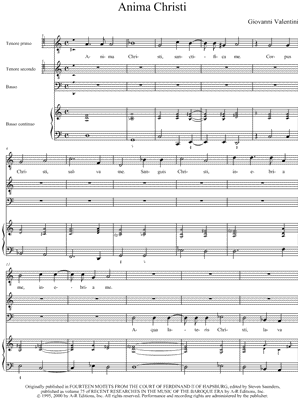Anima Christi Chords Pdf Reader
Tantum Ergo was written by St. Thomas Aquinas.The words are taken from the final verses of the Vesper Hymn, Pange Lingua of the Office for Feast of Corpus Christi that Aquinas wrote in 1264 at the request of Pope Urban IV.Despite it's origins as part of the Divine Office, Tantum Ergo is more closely associated with it's prescribed use in the Benediction of the Blessed Sacrament. Christi Christi. 779 1 1 gold badge 7 7 silver badges 17 17 bronze badges. Add a comment 0. Following the 'Chrome PDF Viewer', next would be 'Adobe Reader' and simply click Enable. P.S- As per my experience, the 'Adobe reader' plugin is way quicker against the 'Adobe acrobat' plugin. Why can't I identify major and minor chords?
| Part of a series on |
| Devotions to Jesus in the Catholic Church |
|---|
Jesus Christ in the Catacombs of Rome (4th century) |
| Devotions |
| Prayers |
The 'Anima Christi' (Latin for ‘Soul of Christ’) is a Catholic prayer to Jesus of medieval origin.
Overview[edit]
The sequence of sentences in the Anima Christi have rich associations with Catholic concepts that relate to the Eucharist (Body and Blood of Christ), Baptism (water) and the Passion of Jesus (Holy Wounds).[1]
Anima Christi Chords
Jean-Baptiste Lully composed a motet called Anima Christi, and musicians such as Giovanni Valentini have performed it. Marco Frisina, an Italian Catholic priest, also composed a musical setting of the prayer, included in his 2000 albumPane di vita nuova.[2]

As it was once mistakenly attributed to St. Ignatius of Loyola, who included it in his Spiritual Exercises, it is sometimes referred to as the Aspirations of St. Ignatius Loyola.


Prayer text[edit]
| Wikisource has original text related to this article: |
| Latin text | Poetic English translation |
|---|---|
|
|
| Translation by CardinalJohn Henry Newman |
|---|
|
In the early nineteenth century the prayer was translated and published as the English Hymn 'Soul of my Saviour, Sanctify my breast' by Edward Caswall. Since then it has been popular as a communion hymn in Catholic communities and has been included in some 43 different hymnals.[3]
History[edit]
This well known Catholic prayer dates to the early fourteenth century and was possibly written by Pope John XXII, but its authorship remains uncertain. The prayer takes its name from its Latin incipit, meaning 'Soul of Christ'. The Anima Christi was popularly believed to have been composed by St. Ignatius of Loyola, as he puts it at the beginning of his Spiritual Exercises and often refers to it. However, it has been found in a number of prayer books printed during Ignatius' youth and is in manuscripts which were written a hundred years before his birth. James Mearns, the English hymnologist, found it in a manuscript of the British Museum which dates back to c. 1370. In the library of Avignon there is preserved a prayer book of Cardinal Peter De Luxembourg, who died in 1387, which contains Anima Christi in practically the same form as we have it today. It has also been found inscribed on one of the gates of the Alcázar of Seville, which dates back to the time of Pedro the Cruel (1350–69).[4]
This prayer was so well known and so popular at the time of Ignatius, that in the first edition of his Spiritual Exercises he merely mentions it, evidently supposing that the reader would know it. In later editions, it was printed in full. It was by assuming that everything in the book was written by St. Ignatius that it came to be looked upon as his composition.[4]
Notes[edit]
- ^Anima Christi at Catholic prayers
- ^'Pane di Vita Nuova'. Marco Frisina Official Website (in Italian). Retrieved 12 March 2017.
- ^'Soul of My Saviour, Sanctify my breast' Hymnary.Org. 1 Nov. 2015
- ^ ab One or more of the preceding sentences incorporates text from a publication now in the public domain: Frisbee, Samuel Hanna (1907). 'Anima Christi' . In Herbermann, Charles (ed.). Catholic Encyclopedia. 1. New York: Robert Appleton.



